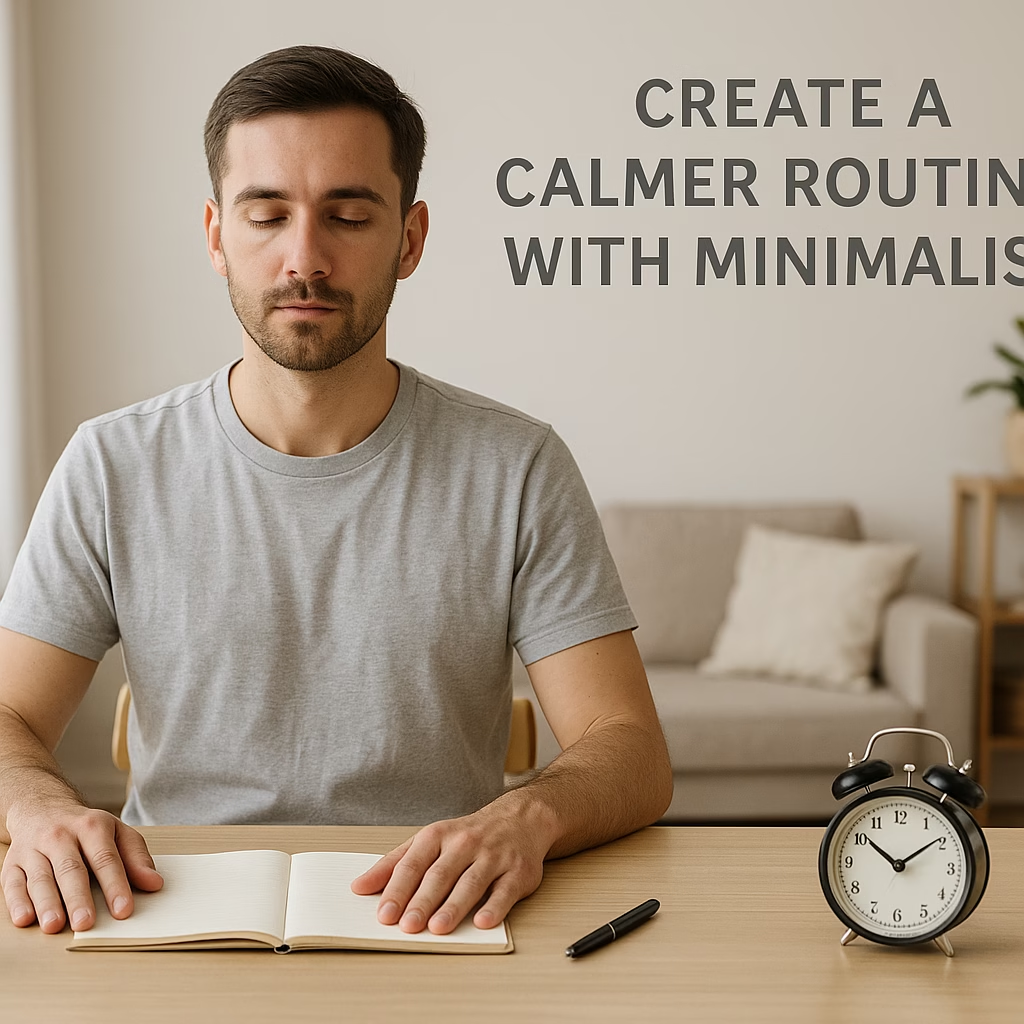In today’s overstimulated world, our schedules are often packed with meetings, notifications, errands, and obligations that leave little room for rest. The result? Burnout, anxiety, and a constant feeling of being behind.
Minimalism offers a powerful way to reclaim your time and create a daily routine that supports peace, productivity, and well-being. In this article, you’ll learn practical ways to design a calmer, more intentional routine rooted in simplicity.
Why a Minimalist Routine Matters
Most people don’t realize that routines shape their lives more than big decisions. What you do every day—how you wake up, how you spend your energy, and how you wind down—directly influences your health, emotions, and mindset.
A minimalist routine helps eliminate:
-
Decision fatigue
-
Unnecessary commitments
-
Time wasted on distractions
-
Chaos caused by lack of structure
Instead, it gives you:
-
Clarity
-
Focus
-
Restorative time
-
Consistent habits aligned with your values
Step 1: Identify What Drains You
Start by auditing your current routine. Look at how you spend your mornings, afternoons, and evenings. What activities leave you feeling:
-
Tired?
-
Unmotivated?
-
Distracted or overwhelmed?
Write them down. These are the habits, tasks, or commitments that need to be minimized or eliminated.
Step 2: Define What Truly Matters Each Day
Minimalism encourages clarity around priorities. Ask yourself:
-
What do I need to do to feel accomplished today?
-
What habits improve my well-being?
-
What activities bring me peace or joy?
These can be as simple as 10 minutes of reading, a daily walk, or preparing a calm breakfast.
Keep your list short—3 to 5 non-negotiables per day is ideal.
Step 3: Create a Morning Routine that Grounds You
Avoid jumping straight into emails, social media, or tasks. A minimalist morning routine should be:
-
Quiet
-
Intentional
-
Tech-free (if possible)
Try incorporating:
-
Stretching or meditation
-
Drinking water or tea slowly
-
Writing in a journal
-
Planning the day with 3 key tasks
The first hour of your day sets the tone. Protect it.
Step 4: Reduce Digital Distractions
Most routines are disrupted by screens. To calm your day:
-
Turn off notifications from non-essential apps
-
Set specific times to check emails
-
Use social media only during planned breaks
-
Keep your phone in another room when focusing
You’ll gain hours of calm and mental clarity.
Step 5: Build White Space Into Your Schedule
White space is unplanned time between tasks or meetings. It helps you breathe, think, and rest.
-
Add 15–30 minute buffers between obligations
-
Schedule nothing for one evening a week
-
Use this time to rest, reflect, or simply do nothing
Minimalism teaches that rest is productive too.
Step 6: Simplify Meals, Chores, and Errands
A chaotic routine is often the result of trying to do too much. Simplify recurring tasks:
-
Meal prep once or twice a week
-
Use capsule wardrobe principles for laundry ease
-
Do errands in bulk, not scattered daily
The less time you spend managing stuff, the more time you have to live.
Step 7: Create an Evening Routine That Unwinds
Evenings should be your time to slow down. A minimalist night routine might include:
-
Light stretching or calming music
-
Journaling or gratitude practice
-
Dimming the lights
-
Reading or a warm shower
Avoid screens at least 30 minutes before bed. Prioritize deep rest.
Step 8: Make It Flexible and Forgiving
Minimalist routines are not rigid. They are fluid, guided by your energy and life context. Some days, your routine might fall apart—and that’s okay.
The goal isn’t perfection. It’s to reduce chaos and increase peace, one day at a time.
Routines That Restore, Not Exhaust
When you build a calm, intentional routine, life becomes easier to manage and more fulfilling to live. You stop rushing. You stop reacting. You start living on your terms.
Through minimalism, your routine becomes a rhythm—not a race.

